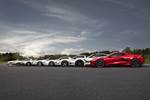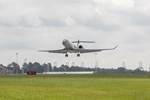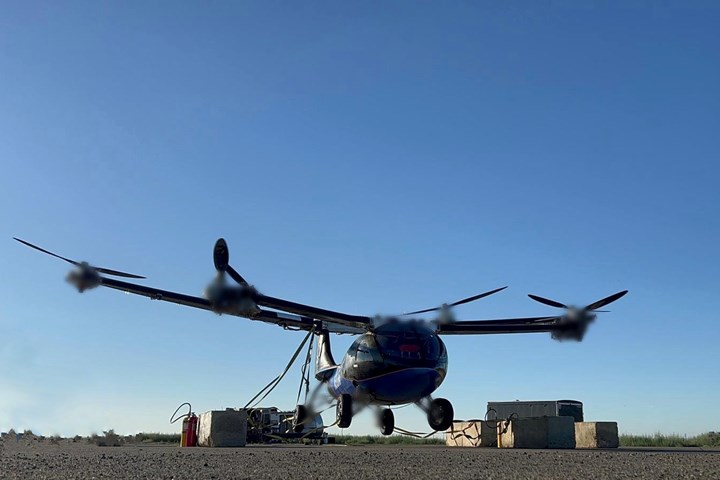Aska A5 flying car achieves flight testing milestone
The fly-and-drive technology — capable of driving on public roads in addition to VTOL and STOL flight — makes progress after receiving FAA special airworthiness certification.
Silicon Valley air mobility company Aska (Mountain View, Calif., U.S.) has announced that a full-scale prototype of the composite Aska A5 flying car successfully completed its first airborne tests, lifting from a California airfield with hovered thrust while the vehicle was tethered to the ground.
The size of an SUV in drive mode, the four-seater technology can travel by road and air with vertical takeoff and landing (VTOL) and short takeoff and landing (STOL) capabilities. The drive-and-fly eVTOL is designed with maximum safety standards and a 250-mile flight range. In June 2023, the company reported achieving certification of authorization (COA) and special airworthiness certification by the Federal Aviation Administration (FAA).
The Aska A5 has also received authorization to drive on public roads from the Department of Motor Vehicles (DMV). The company has successfully conducted more than 300 miles of road testing around Silicone Valley.
“It was an incredible feeling of accomplishment for the team to reach this new milestone,” Guy Kaplinsky, CEO and cofounder of Aska, says. “This moment represents a giant leap for the aviation and automotive industries.”
Aska A5 is not only capable of VTOL from a helipad or vertiport, but can also perform an energy-efficient STOL from the runway using the in-wheel motors, thrust from the props and aerodynamic wings.
Maki Kaplinsky, cofounder/chair and COO, comments on the A5’s next steps towards commercialization in 2026, subject to regulatory approvals: “This first lift-off was a true accomplishment and years of engineering design and analysis became a reality. A5 successfully lifted off and maintained thrust hover status. We are closely working with the FAA to ensure continued progress with our flight testing. We will continue the optimization of hovering and VTOL. The next phase will be working toward transition into cruise and STOL.”
Aska A5 makes the maximum use of existing infrastructure, such as parking, charging stations, airfields, helipads and runways, for a seamless integration into city and suburban landscapes. The vehicle fits in standard parking spaces, it can be charged at home and electric vehicle (EV) charging stations, and the range extender engine runs on premium gasoline purchased at existing automotive gas stations.
Read more about the technology here.
Related Content
-
Composite sidewall cover expands options for fire-safe rail components
R&D project by CG Rail explores use of carbon fiber-reinforced thermoplastics and recycled manufacturing scrap to meet fire safety, weight and volume targets.
-
Update: THOR project for industrialized, recyclable thermoplastic composite tanks for hydrogen storage
A look into the tape/liner materials, LATW/recycling processes, design software and new equipment toward commercialization of Type 4.5 tanks.
-
Plant tour: Joby Aviation, Marina, Calif., U.S.
As the advanced air mobility market begins to take shape, market leader Joby Aviation works to industrialize composites manufacturing for its first-generation, composites-intensive, all-electric air taxi.

















